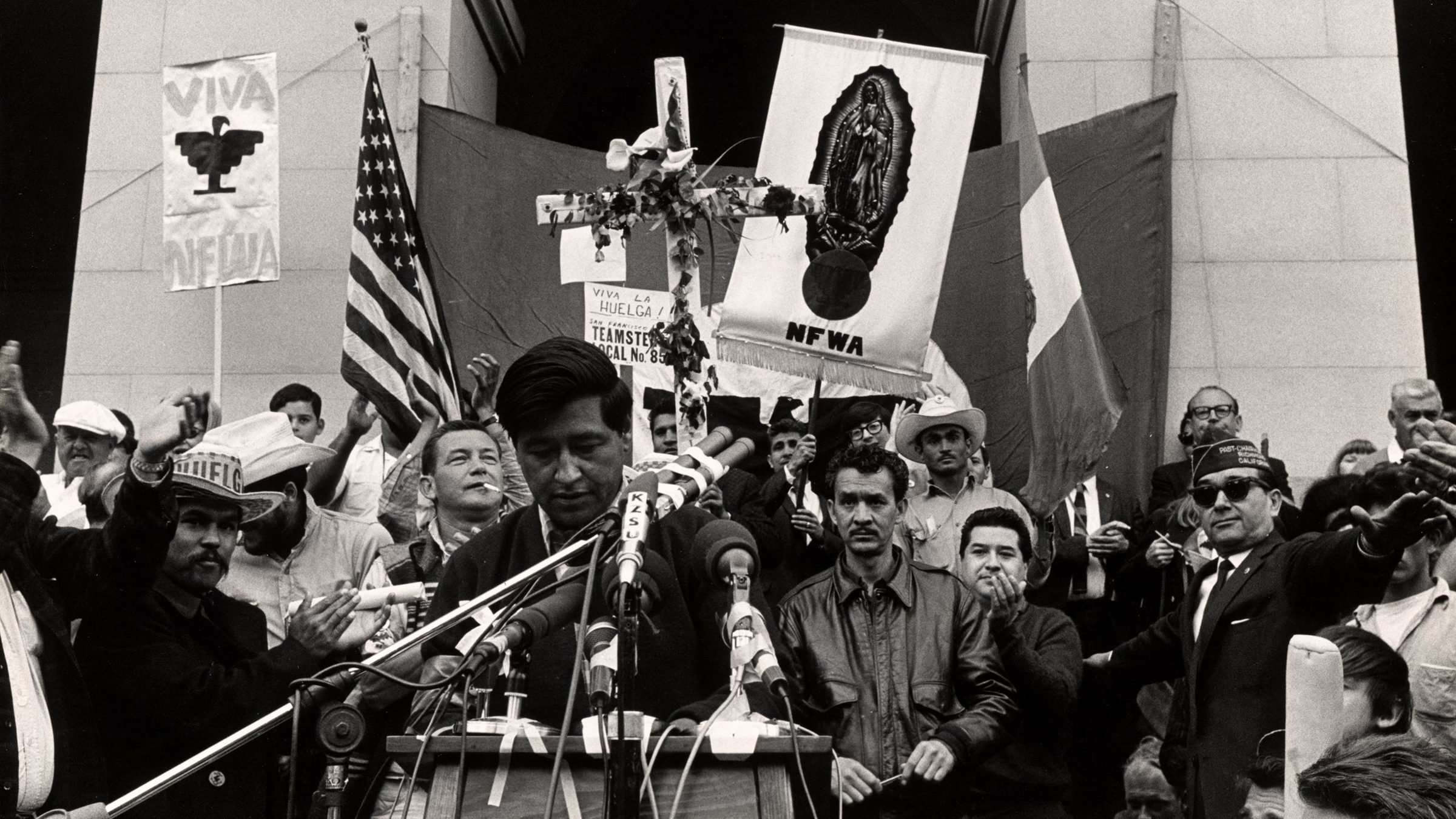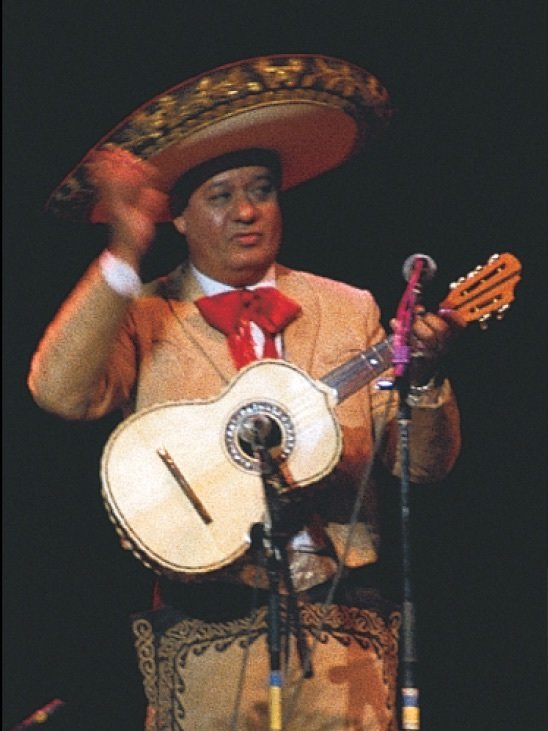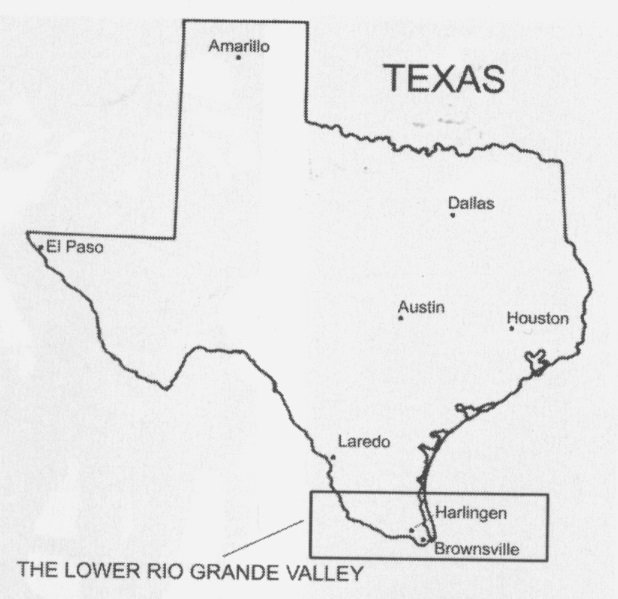Music of the Chicano Movement
Lesson Hub 4 :
Mariachi and Conjunto: Symbols of Chicano/a Identity and Cultural Pride


What instruments and stylistic characteristics are associated with mariachi and conjunto music?
Why are these musical genres symbols of pride for the Chicano/a community?

Mariachi Los Camperos Performing on Stage, photograph by Daniel Sheehy. Smithsonian Folkways Recordings.
The overarching essential questions for Lesson Hub 4 are:

Mariachi and Conjunto: Symbols of Chicano/a Identity and Cultural Pride
HISTORY & CULTURE
MUSIC LISTENING
MUSIC MAKING

Flaco Jiménez, by Al Rendón. National Portrait Gallery
30+ MIN
25+ MIN
15+ MIN
Exploring Mariachi: An Enduring Cultural Symbol
Path 1


30+ minutes

Natividad Cano (Los Camperos Group Leader), photo by Hugh Talman. Smithsonian Folkways.
Mariachi Los Camperos


Watch this video, featuring one of the most famous performing mariachi groups in the United States, Mariachi Los Camperos, from Los Angeles.
What instruments do you notice?
Typical Mariachi Instrumentation

- Voice
- Violins
- Trumpets
- Vihuela (small guitar)
- Guitarrón (large bass guitar)
- Harp (sometimes)


Student Connections


Have you ever heard a mariachi group perform?
Where?
Modern-Day Mariachi

Mariachi Los Camperos Performing on Stage, photo by Daniel Sheehy. Smithsonian Folkways Recordings.

Modern-day mariachi groups often perform at festivals, restaurants, celebrations, in concert halls/theaters (professional touring groups).

What do you think the song in the video was about?
Class Discussion: Interpreting Meaning


This is a "popurrí," or medley, of songs called “México lindo” (“Pretty Mexico”), and "Viva México," ("Long live Mexico"). The lyrics reflect the pride many Mexican Americans feel about their cultural heritage.


Church at Cuernavaca, Mexico, by Helen Hyde. Smithsonian American Art Museum.



In Mexico, by William Henry Holmes. Smithsonian American Art Museum.
Taxco, Mexico, by Anthony Thieme. Library of Congress Copyright Deposit Collection.
"México lindo" Medley: Interpreting Meaning


Watch the video again.
In what ways (other than through lyrics/language) do musicians convey the message of this song?
- The expressive and passionate style of singing
- The feeling with which the instrumentalists play
- The way in which the musicians are dressed
- Gestures/choreography/stage presence (for example, raising their hats for emphasis)
Discussion Topics



¡Viva el mariachi! Cover art by Mediastudio, photographs by Daniel Sheehy. Smithsonian Folkways Recordings.
Mariachi musicians commonly wear a uniform called traje de charro. The word charro refers to a Mexican rodeo horseman.


Mola, Figure with Horse, (Cantares Rancheros, Antonio Aguilar), unknown artist. National Museum of Natural History.
Charro Showing Roping Skills, photo by Al Rendón. Smithsonian American Art Museum.



Carlos Samaniego and Natalia Meléndez from Mariachi Arcoiris de Los Ángeles, by Daniel Sheehy. Smithsonian Folklife Magazine.
Click the button below to read a short article about the history of mariachi.
Choose one of the activity options below:
- Read aloud as a full class (students take turns)
- Teacher reads to students
- Students read independently
- Students read with partner or in a small group
Read about Mariachi


A Brief History of Mariachi


Mariachi Timeline (in a nutshell):
When the Spanish conquered the land we now know as Mexico (in the 16th century), they imported new types of instruments (such as different types of guitars and harps).
What we now recognize as the mariachi sound began in rural areas of western Mexico.
This music tradition started to spread as people migrated from rural to more urban areas.
Eventually, this music spread even further by way of radio stations, movie studios, and record companies.

Luis Damián of Mariachi Los Camperos, photo by Daniel Sheehy. Smithsonian Folkways Recordings.


Jesús "Chuy" Guzmán, photo by Hugh Talman. Smithsonian Folkways Recordings.
During the time of the Chicano movement (1960s–1970s), mariachi music become increasing popular in certain parts of the United States.

"Reclaiming" this traditional Mexican folk music style was one way for Mexican Americans to embrace/reconnect with their cultural heritage.
During this time, mariachi became an important symbol of solidarity/unity and sometimes resistance in Mexican American communities.
In the United States (especially in the Southwest), many public schools now have mariachi education programs.
Mariachi: The Chicano Movement and Beyond
What makes a good mariachi?


After completing the activities in Path 1, reflect on the following question:
What is Mariachi?
- Consider using a Think/Pair/Share strategy for this discussion activity:
- Students think individually about the question
- Students discuss their ideas with a partner or small group
- One member of each group shares an idea with the full class
Closing Discussion



A mariachi plays mariachi in a mariachi!

Mariachi is . . .
- A type of musician
- A type of performing ensemble that includes specific instrumentation
- A certain repertoire
Mariachi is . . .
- An emblem of cultural heritage
- A symbol of cultural pride
- A symbol of resistance
- A symbol of solidarity/unity
- Retention and reclamation of culture

Learning Checkpoint

- Where did mariachi originate?
- What is the typical instrumentation of a mariachi ensemble?
- Why did mariachi music gain popularity in the United States during the Chicano movement?
End of Path 1! Where will you go next?






Experiencing Conjunto: Dance Music of South Texas
Path 2

25+ Minutes



Conjunto
Conjunto is another type of music that gained popularity in the United States during the Chicano movement and continues to be a cultural symbol for Mexican American communities today.



Cover art provided by Flaco Jiménez. Arhoolie Records.

Engaged Listening: "El coco rayado"

Experience 1:
- Play short 30–45 second excerpts of “El coco rayado” (Stripped coconut) by Rubén Vela y su Conjunto.
-
Engage with the music in the following ways:
- Tap or step on beat.
- Clap on the offbeat.
- Identify and clap with the rhythm of the bass line.
"El coco rayado," by Rubén Vela y su Conjunto

Engaged Listening: "El coco rayado"

Experience 2:
- Listen again
- This time, sing along with the refrain when it occurs:
"Que sí, que sí. Que no, que no, ese coco rayado lo quiero yo"
Translation: "Oh yes, oh yes, oh no, oh no, I want that stripped coconut"
A specific style of music that originated in south Texas and the group of musicians who play this music.
Adding Context: What Is Conjunto?


Conjunto is another term that has multiple meanings…
In a general sense, this word simply means "group" or "ensemble."
- From this perspective, many different musical genres have related conjuntos (e.g. conjunto norteño, conjunto jarocho, conjunto de arpa grande).
Within the context of this lesson, however, the term conjunto refers to:

Conjunto is:
Border music that originated in the Lower Rio Grande Valley in South Texas (see map)
A unique blend of different cultures and music: most notably, Mexican norteño and German polka music
Although conjunto shares many similarities with norteño music, Tejano musicians adapted and modified this music in ways that made it become regionally distinct and uniquely American.



Conjunto is . . .
. . . for dancing!
Conjunto bands do everything they can to keep people dancing.
If people are not dancing, members of the conjunto band know they need to do something differently.



Attentive Listening
Listen to a short excerpt (30-45 seconds) from this recording again, while thinking about the following guiding question:
What instruments do you hear?

Conjunto music almost always incorporates: accordion (lead instrument), bajo sexto (large 12-string guitar), bass (acoustic or electric), drums, and voice (the lead singer sometimes calls out instructions and/or encourages people to dance during the song).

Narciso Martinez, Accordion, with Santiago Almeida, Bajo Sexto, unknown photographer. Arhoolie Records.
Tony De la Rosa, photo by Cynthia Vidaurri. Smithsonian Folkways Recordings.




Los Caminantes, Eastside Club 1957, photo courtesy Richard Herrera. Arhoolie Records.
Conjunto was an important part of migrant worker culture in the early twentieth century.
Conjunto followed the migration of workers from Mexico–in many ways, it became the glue of these communities.
People who lived in labor camps looked forward to a few hours of relaxation and entertainment on Friday and Saturday nights... and dancing to conjunto music provided this.
Historical Context of Conjunto


Braceros Preparing Food, photograph by Leonard Nadel. National Museum of American History.

Historical Context (continued)


For a long time, conjunto was considered music of poor/working class people in rural areas.
During the Chicano movement, this form of music was sometimes used to express views on the social issues of the times, such as workers' rights, the Vietnam War, and educational access.
Over time, the popularity of conjunto spread far beyond the Texas-Mexico border and more middle-class Mexican Americans also began to embrace this music as a symbol of their cultural identity.


Let’s Dance! (Learn a basic cumbia step)
Step 1: The Feet
- Step back with one foot, then bring it back to meet the other
- Repeat with the other foot

Step 2: The Arms
- As you step back, open your arms to that side
- As you move your foot back to center, close your arms
- Repeat on the other side

Let’s Dance! (Learn a basic cumbia step)
Step 3: Try it with a partner
- Start by facing each other, holding hands
- As you step back with one foot, you and your partner will each release one hand
- As you move your foot back to center, you will re-grip your partner’s hand (so you’re holding both again)
- Repeat on the other side

Step 4: Try it with the music!

See the dance in action!

Extension Activities: Polka


Cumbia (e.g., "El coco rayado") is just one popular song/dance style in the conjunto tradition.
Another fundamental song/dance style within the conjunto tradition is the polka.
Optional: Listen to an example of a polka and watch a related podcast.

Learning Checkpoint
- Where did conjunto originate?
- What is the typical instrumentation of a conjunto ensemble?
- What is the social context of conjunto?

End of Path 2! Where will you go next?





Comparing Mariachi and Conjunto
Path 3

15+ Minutes



¡Viva el mariachi! Cover art by Mediastudio. Smithsonian Folkways Recordings.

Comparing Mariachi and Conjunto



Borders y bailes, cover art by Cooley Design Lab, photo by Daniel Sheehy. Smithsonian Folkways Recordings.
Mariachi Los Camperos de Nati Cano, photograph by Hugh Talman. Smithsonian Folkways Magazine.

Attentive Listening Activity

Conjunto:
Mariachi:
-
Listen to the audio recording of “Mexico lindo” (mariachi):
- Write your observations of the musical elements, expressive qualities, and historical/cultural context in the first column.
-
Listen to the audio recording of “El coco rayado” (conjunto):
- Write your observations of the musical elements, expressive qualities, and historical/cultural context in the second column.
- Compare your observations in the third column.

"El coco rayado," by Rubén Vela y su Conjunto
"Mexico lindo," by Mariachi Los Camperos de Nati Cano

Mariachi and Conjunto: Similarities and Differences
Similarities:
- Both gained popularity during the Chicano movement
- Both are important symbols of Mexican American cultural heritage and pride
- Both are sung in Spanish
- Historical Connections (both began in rural areas)
Differences:
- Instrumentation (conjunto: accordion and bajo-sexto; mariachi: vihuela, guitarrón, trumpet)
- Different styles of singing
- Differences in tempo and articulation
- Different purposes (to dance vs. to entertain)
- Different performance contexts (stage vs. dance hall; costumes vs. no specific dress)
- Origin (mariachi – western Mexico; conjunto – south Texas)


Learning Checkpoint
- What are some similarities and differences between mariachi and conjunto music?

End of Path 3 and Lesson Hub 4! Where will you go next?








Lesson Hub 4 Media Credits

Audio courtesy of:
Smithsonian Folkways Recordings
Images courtesy of:
The Arhoolie Foundation
TM/© 2021 the Cesar Chavez Foundation. www.chavezfoundation.org
National Museum of American History
National Museum of Natural History
Smithsonian American Art Museum
Smithsonian Folkways Recordings
National Portrait Gallery
Library of Congress
Video courtesy of:
Smithsonian Folkways Recordings
University of Washington

© 2021 Smithsonian Institution. Personal, educational, and non-commercial uses allowed; commercial rights reserved. See Smithsonian terms of use for more information
This Lesson was funded in part by the Smithsonian Youth Access Grants Program with support from the Society for Ethnomusicology and the National Association for Music Education.
For full bibliography and media credits, see Lesson 4 landing page.

